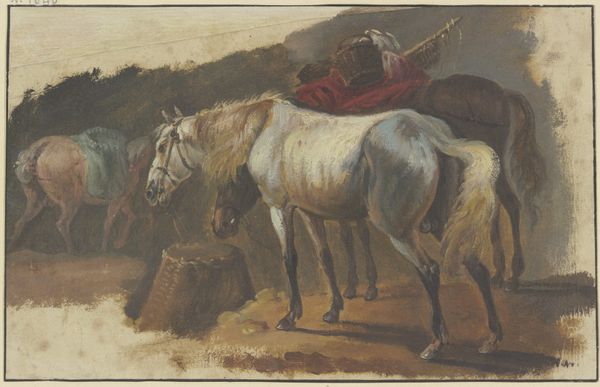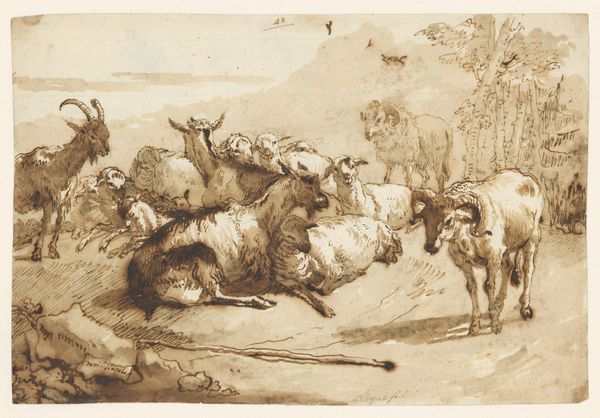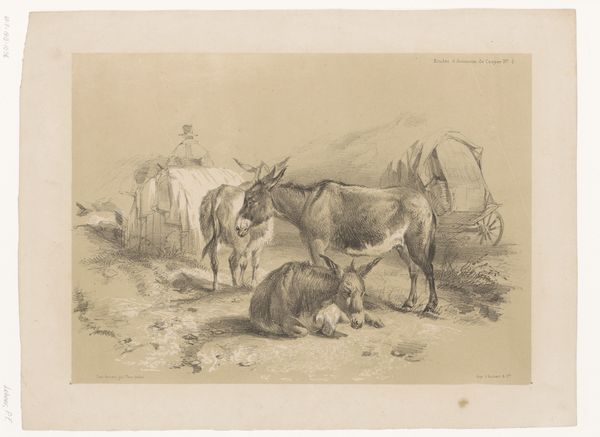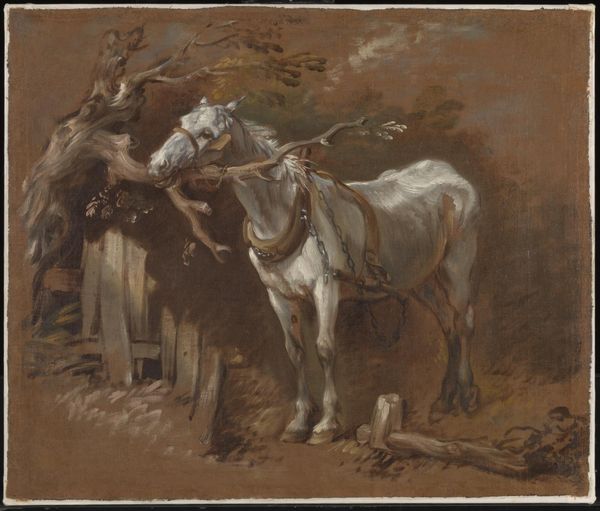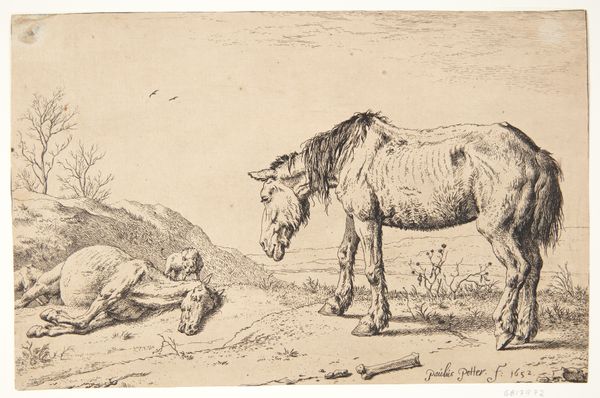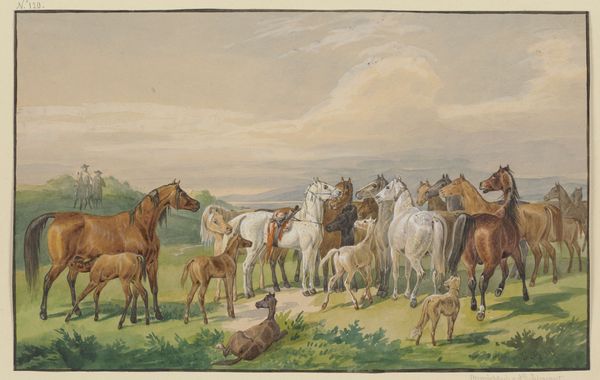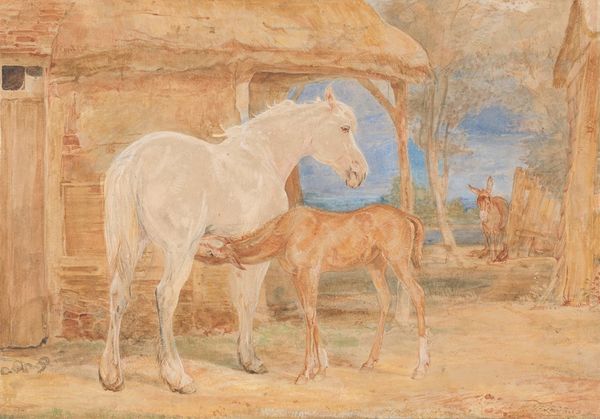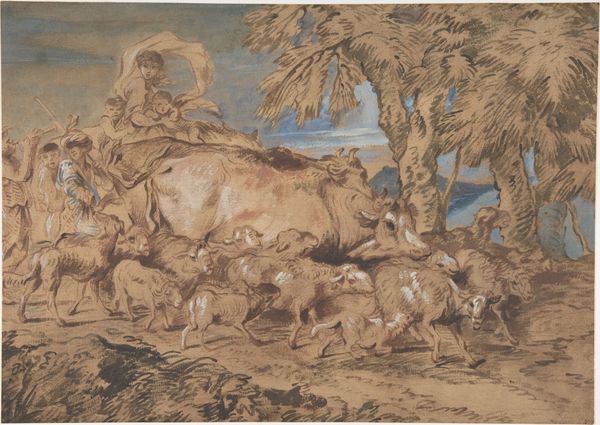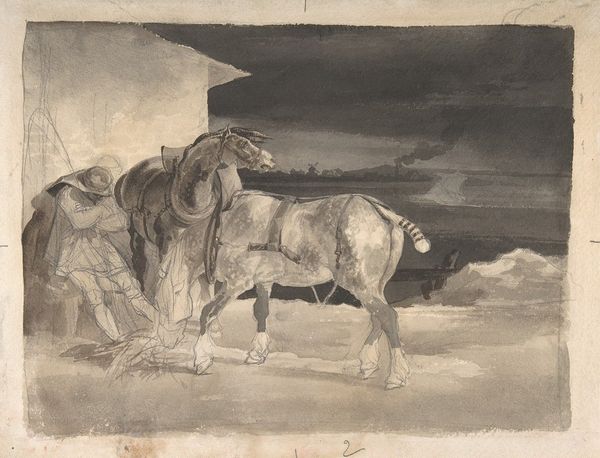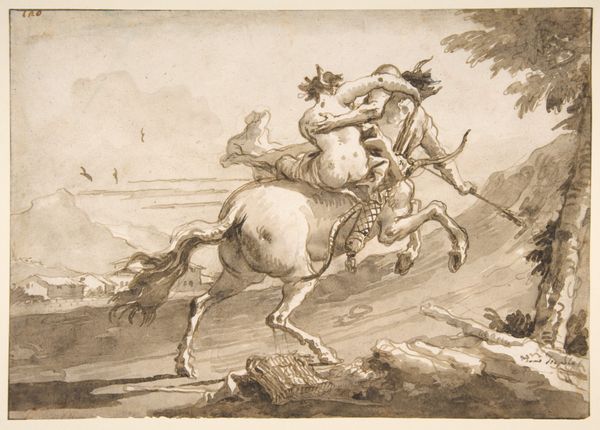
Dimensions: 11 3/4 x 22 1/2 in. (29.8 x 57.1 cm)
Copyright: Public Domain
Curator: Looking at this somber piece by Adolf Schreyer, executed between 1870 and 1887, titled "Abandoned: Marshes of the Danube," presently held at The Metropolitan Museum of Art in New York, my initial impression is one of stillness and depletion. Editor: It's true. There’s a muted quality to the watercolor wash and ink that evokes a sense of desolation, like a freeze frame capturing a weary moment. The eye is drawn immediately to the stark realism in rendering the horse and cart. Curator: Schreyer was known for his paintings of horses and scenes of military life. This work really distills that sensibility, focusing on the animal as both a symbol of labor and a victim of circumstance. The posture, the heavy downward gaze of the horse, speak to burdens, perhaps more than just the cart behind him. Think of the Danube marshes – frontiers, boundaries, escape, but also vulnerability to attack, hardship and disease. Editor: Agreed, and consider the strategic arrangement; the artist uses muted tones but with strong directional lines—note the diagonal from the horse’s head down to the earth—creating visual weight. This weight amplifies the somber mood we initially observe and imbues the piece with psychological depth. I see symbolism at play with the materials and structural elements, and it lends itself beautifully to understanding the overarching theme of "abandonment." Curator: Abandonment resonates on many levels here. Not just the obvious material abandonment of the horse and cart, perhaps disabled or broken down, but the potential for abandonment by society, by hope, by the forces, whatever they may be, that brought it and perhaps others to that marshy landscape. Editor: Right. The romantic inclination towards the solitary subject is also prominent here. While Schreyer’s realism accurately captures detail, it doesn’t shy away from sentimentalizing the animal to imbue emotional value in an almost philosophical statement. Curator: These animals and people working are also visual motifs to consider for the 19th-century viewer. It gives form to the cultural trauma experienced from battles, wars, displacement... they give the unacknowledged toll a recognizable face, body, pose. Editor: Looking again, I appreciate now how Schreyer orchestrates visual tension through the use of muted hues and contrasting, dynamic line-work in his draftsmanship to pull out this evocative symbolism. A brilliant play of artistic contrasts adding intellectual and cultural dimensions to a single abandoned horse in the marshes. Curator: I'm walking away pondering about the burdens, those apparent and invisible, carried both by the animal and us as viewers of the past.
Comments
No comments
Be the first to comment and join the conversation on the ultimate creative platform.
